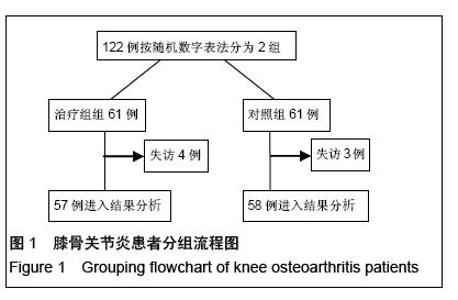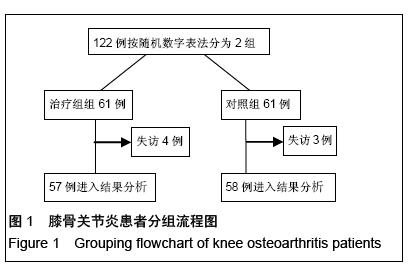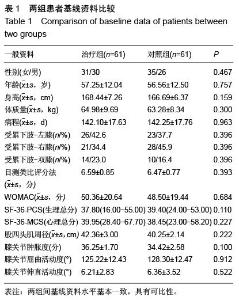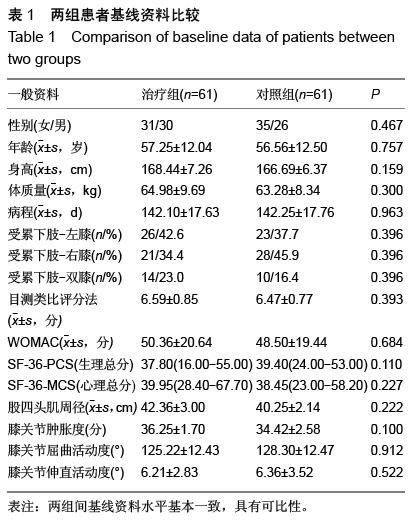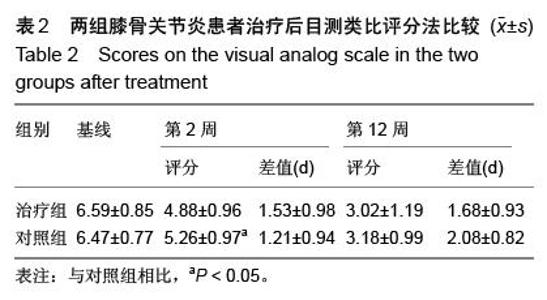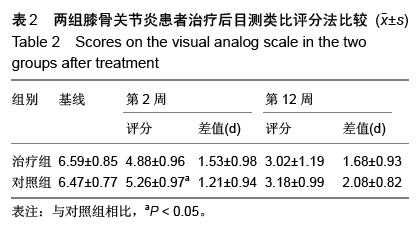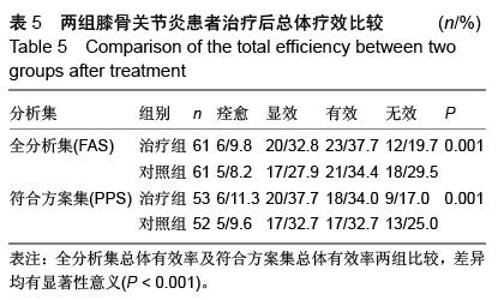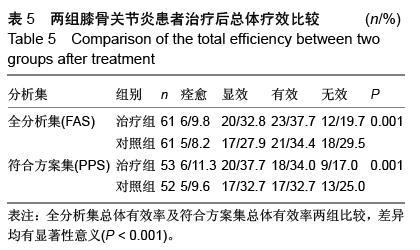| [1] 吴毅,胡永善,李放,等.骨关节炎的功能评定与康复治疗[J].中国康复医学杂志,2002,17(6):361-363.[2] 李宁华,薛庆云,张毅,等.中国六城市中老年人群X 线膝骨关节炎流行病学分析[J].实用医学杂志,2008,24(16): 2887-2888.[3] 徐卫东,吴岳篙,张春才.骨关节炎的诊断与治疗[M].上海:第二军医大学出版社,2004:3[4] 孙振球.医用统计学[M].2版.北京:人民卫生出版社. 2002: 832-833.[5] Zhang W, Moskowitz RW, Nuki G,et al.OARSI recommendations for the management of hip and knee osteoarthritis, Part II: OARSI evidence-based, expert consensus guidelines. Osteoarthritis Cartilage. 2008; 16(2):137-162.[6] 王森林,郑季南,洪庆南,等.口服盐酸氨基葡萄糖胶囊联合透明质酸腔内注射治疗膝退行性骨性关节炎疗效观察[J].临床军医杂志,2013,41(2):160-162.[7] 陈明生,张毅,唐晓兰,等.盐酸氨基葡萄糖片联合玻璃酸钠治疗退行性骨性膝关节炎的临床观察[J].临床军医杂志, 2012,40(5): 1082-1084.[8] 孟岚,樊啸.玻璃酸钠注射配合体外冲击波治疗膝骨关节炎的临床观察[J].中国康复理论与实践,2010,16(8): 713-715.[9] 谢心军,王林华,严可等.独活寄生合剂治疗寒湿阻络型膝关节炎的临床疗效及生存质量观察[J].中国中医骨伤科杂志, 2012,12(2):26-30.[10] 蒋生云.推拿治疗膝关节骨关节炎50例体会[J].按摩与导引 ,2003,19(1):36-37.[11] 杨宏.推拿治疗膝关节增生性骨关节炎156例[J].中国中医药信息杂志,2001,8(11):80-83. [12] 李亚东.火针治疗膝关节骨性关节炎49例[J].山西中医, 2002,18(3):42.[13] 李晓吴,黄清春,沈鹰,等.单刺曲池穴治疗膝关节骨关节炎68例[J].中国临床康复,2004,8(20):4027-4028. [14] 陈小凯,吴虹.巨刺治疗膝骨关节炎81例疗效观察[J].针灸临床杂志,2003,19(8):53. [15] 张必萌,吴耀持,沈健.长针透刺治疗膝骨关节炎的临床研究[J].中国针灸,2004,24(9):613-614. [16] 齐丹丹,李殿宁.针刀加揉髌治疗膝关节骨性关节炎临床观察[J].中国医药导报,2012,9(11):126 -127.[17] 龚志贤,谭旭仪,卢敏.小针刀配合针灸辨证治疗膝骨性关节炎的临床观察[J].湖南中医药大学学报.2011.31(11) : 69-72.[18] 邹学敏,顾堃.针刀松解配合穴位熏蒸治疗膝关节骨性关节炎的临床研究[J].中医外治杂志,2009,18(6):6-7.[19] 胡永均.针刀配合微波治疗膝关节骨性关节炎临床观察[J].针灸临床杂志,2010,26(10):48-49.[20] O’Reilly SC,Muir KR, Doherty M. Eff ectiveness of home exercise on pain and disability from osteoarthritis of the knee: a randomised controlled trial. Ann Rheum Dis.1999;58(1):15-19.[21] Maurer BT, Stern AG, Kinossian B, et al. Osteoarthritis of the knee:isokinetic quadriceps exercise versus an educational intervention. ArchPhys Med Rehabil, 1999, 80(10): 1293-1299.[22] Topp R, Woolley S, Hornyak J 3rd, et al. The eff ect of dynamic versusisometric resistance training on pain and functioning among adults with osteoarthritis of the knee. Arch Phys Med Rehabil.2002;83(9):1187-1195.[23] Brismée JM, Paige RL, Chyu MC, et al. Group and home-based tai chi in elderly subjects with knee osteoarthritis: a randomized controlled trial. Clin Rehabil. 2007;21(2): 99-111.[24] Mangani I, Cesari M, Kritchevsky SB, et al. Physical exercise and comorbidity. Results from the Fitness and Arthritis in SeniorsTrial(FAST). Aging Clin Exp Res. 2006;18(5): 374-380.[25] Roddy E, Zhang W, Doherty M. Aerobic walking or strengthening exercise for osteoarthritis of the knee? A systematic review. Ann Rheum Dis.2005;64(4): 544-548.[26] Williamson L, Wyatt MR, Yein K, et al. Severe knee osteoarthritis:a randomized controlled trial of acupuncture, physiotherapy (supervised exercise)and standard management for patients awaiting knee replacement. Rheumatology (Oxford).2007; 46(9): 1445-1449. |
